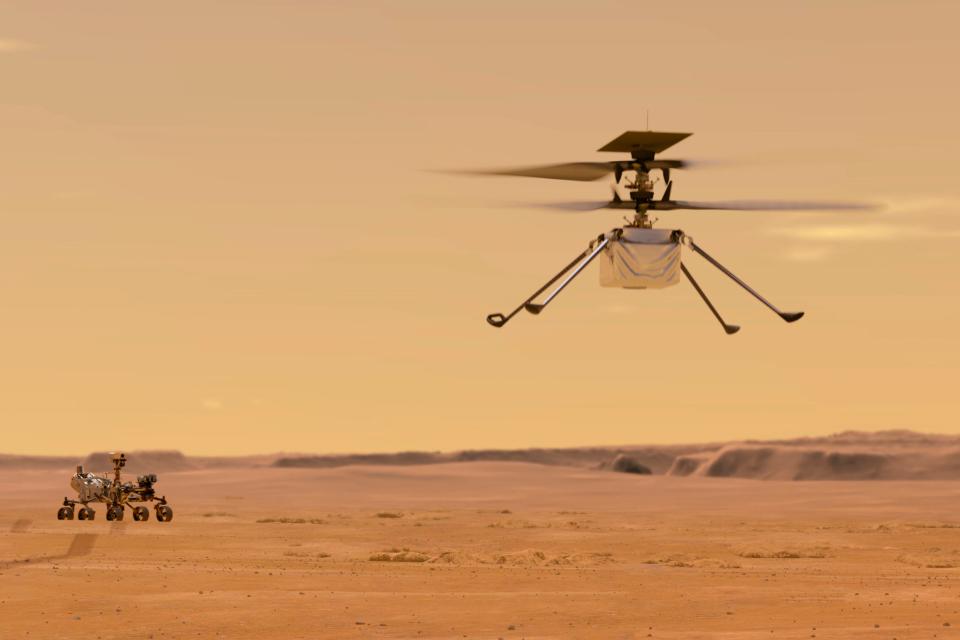Nasa unlocks Mars helicopter’s rotor blades ahead of pioneering Ingenuity flight

Nasa’s Ingenuity helicopter has unlocked its rotorblades ahead of a pioneering flight over the red planet’s surface.
The helicopter was dropped from the Perseverance rover in recent days and has successfully fended for itself on the Martian surface. Since then, engineers have been making preparations and ensuring that the helicopter is ready to fly.
It will begin its first test journey “no earlier” than 11 April, Nasa has said, and it hopes to conduct at least five flights before its month-long journey is over. After that it will be left on the surface, hopefully having successfully demonstrated the technology it was taken to Mars to test.
Before that happens, Nasa must ensure that the helicopter is ready to fly. The first of those jobs involved unlocking what it refers to as the “blades of glory”, taking them out of the position they were stored away in for the journey and ready to spin up into the air.
Now the space agency will begin with a slow-speed spin of the blades, without them getting fast enough to actually lift Ingenuity. That will mark the first time the helicopter has used them on the surface, and is another key step before taking it into the air.
Read more:
Starship SN15 test dates set as SpaceX launches debris hotline
‘WE COULD PROBABLY BUILD JURASSIC PARK,’ SAYS CO-FOUNDER OF ELON MUSK’S NEURALINK
FACEBOOK WILL NOT NOTIFY THE HALF A BILLION USERS CAUGHT UP IN ITS HUGE DATA LEAK, IT SAYS
After that will come another step which will see the rotor blades sped up to the roughly 2,400 RPM speed that will be required to actually take off, though the helicopter will stay on the ground.
It will then conduct its first lift-off, taking off and hovering in the thin Martian atmosphere, before flying and landing itself.
That will mark the first time that any craft from Earth has conducted a powered or controlled flight on another planet.
The following test flights will see the craft fly further and higher across the surface, providing extra information on the performance of the helicopter.
Nasa will not conduct science experiments using Ingenuity. Instead, it is seen as a technology demonstration, checking designs that should inform the exploring spacecraft of the future.
